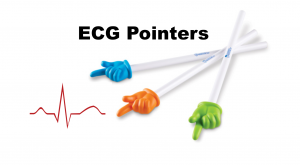Author: Chuck Pilcher, MD FACEP (Editor, Med Mal Insights) // Reviewers: Alex Koyfman, MD (@EMHighAK) and Brit Long, MD (@long_brit)
Here’s another case from Medical Malpractice Insights – Learning from Lawsuits, a monthly email newsletter for ED physicians. The goal of MMI-LFLis to improve patient safety, educate physicians, and reduce the cost and stress of medical malpractice lawsuits. To opt in to the free subscriber list, click here.
Chuck Pilcher, MD, FACEP
Editor, Med Mal Insights
Back to basics: Missed MI, but who’s responsible?
Hospital and nurse also liable for chest pain patient’s premature discharge
Facts: A 57-year-old male develops chest pain radiating to his left arm accompanied by vomiting. He calls 911. The EMT’s report that his chest pain and nausea continue enroute but subside upon his arrival in the ED. The hospital’s policy requires the admitting nurse to assign chest pain patients to one of four standard order-set protocols or “Tracks” which in this case requires serial ECG’s and troponins. The nurse orders a troponin and ECG but fails to assign the patient to a “track” that alerts the Emergency Physician (EP). The EP himself also fails to follow the protocol. When the EP sees the patient 80 minutes after arrival, the patient’s chest pain and nausea are gone. Past history reveals high cholesterol, COPD and a recent negative cardiac stress test. Family history includes CAD, hypertension, and diabetes. The troponin level is 0.09 ng/ml (normal = 0 – 0.08), and the ECG computer-generated report says “Borderline ECG – Preliminary – MD Must Review STAT.” The EP’s note describes the ECG as “no ischemic changes”, and no repeat ECG or troponin is obtained. The patient is discharged 52 minutes after seeing the EP with instructions that the exact cause of his  chest pain is unknown but does not appear to be serious or related to his heart. He dies at home the next day of an acute MI. An attorney is consulted and a lawsuit filed against the EP, the ED RN, and the hospital.
chest pain is unknown but does not appear to be serious or related to his heart. He dies at home the next day of an acute MI. An attorney is consulted and a lawsuit filed against the EP, the ED RN, and the hospital.
Plaintiff: The patient’s symptoms warranted a Level II track, per hospital protocol, under which his troponin and ECG had to be repeated before discharge. The RN should have informed the EP of this. Our cardiology expert says that the patient’s ECG had significant abnormalities. His initial troponin was slightly elevated and not given appropriate attention. He needed further care before discharge. Had the RN managed the patient according to hospital protocols, the patient would not have been discharged and died. The nurse either did not alert the doctor to the situation or the doctor was not receptive to the RN’s input. The lack of appropriate doctor/nurse communication and attention to hospital protocols caused the patient’s death.
Defense: I don’t recall if I saw or heard anything from the EMT’s or the nurse, but the patient had no chest pain or nausea/vomiting when I saw him. My evaluation and discharge was appropriate.
Result: The EP settled pre-trial. The nurse and hospital were granted a Motion for Summary Judgement (MSJ) by the trial court, removing them from the case. The plaintiff appealed the MSJ. The appellate court agreed that issues of material fact remained regarding the RN’s negligence as a cause of the premature discharge and the patient’s death. The MSJ was overturned. A subsequent settlement with the hospital and RN is presumed but not available.
Takeaways:
- Read the nurses notes.
- Read the EMS reports.
- Ask good questions.
- Listen to the answers.
- Follow department and hospital protocols.
- Pay attention to the tests that are ordered. Do not assume the results would be better if repeated.
- The age of “Nurses don’t make diagnoses” is over. A good nurse’s input can save your butt – and perhaps the life of one of your patients.
- If you disagree with a result (ECG, troponin, etc.), document your rationale. Using the phrase “In my personal opinion…” in your MDM indicates that your decision(s) are based on judgement, not negligence.
- If you’re a nurse, speak up.
- If you’re a doc, listen. Thank the nurse. If you disagree, ask him/her to document the conversation. Do the same yourself.
- If you’re not certain, ask a colleague.
- Stay humble. None of us are right 100% of the time.






